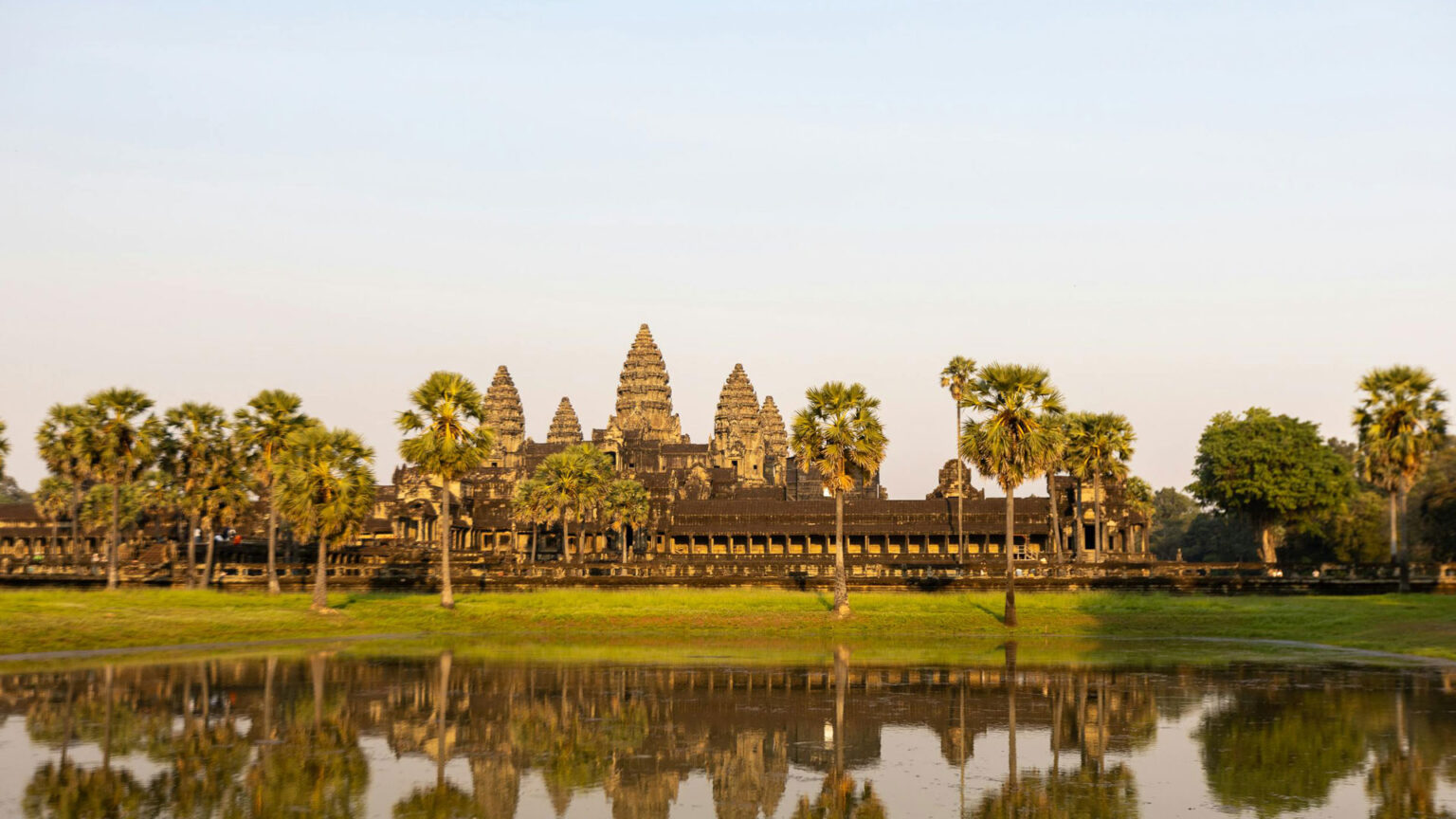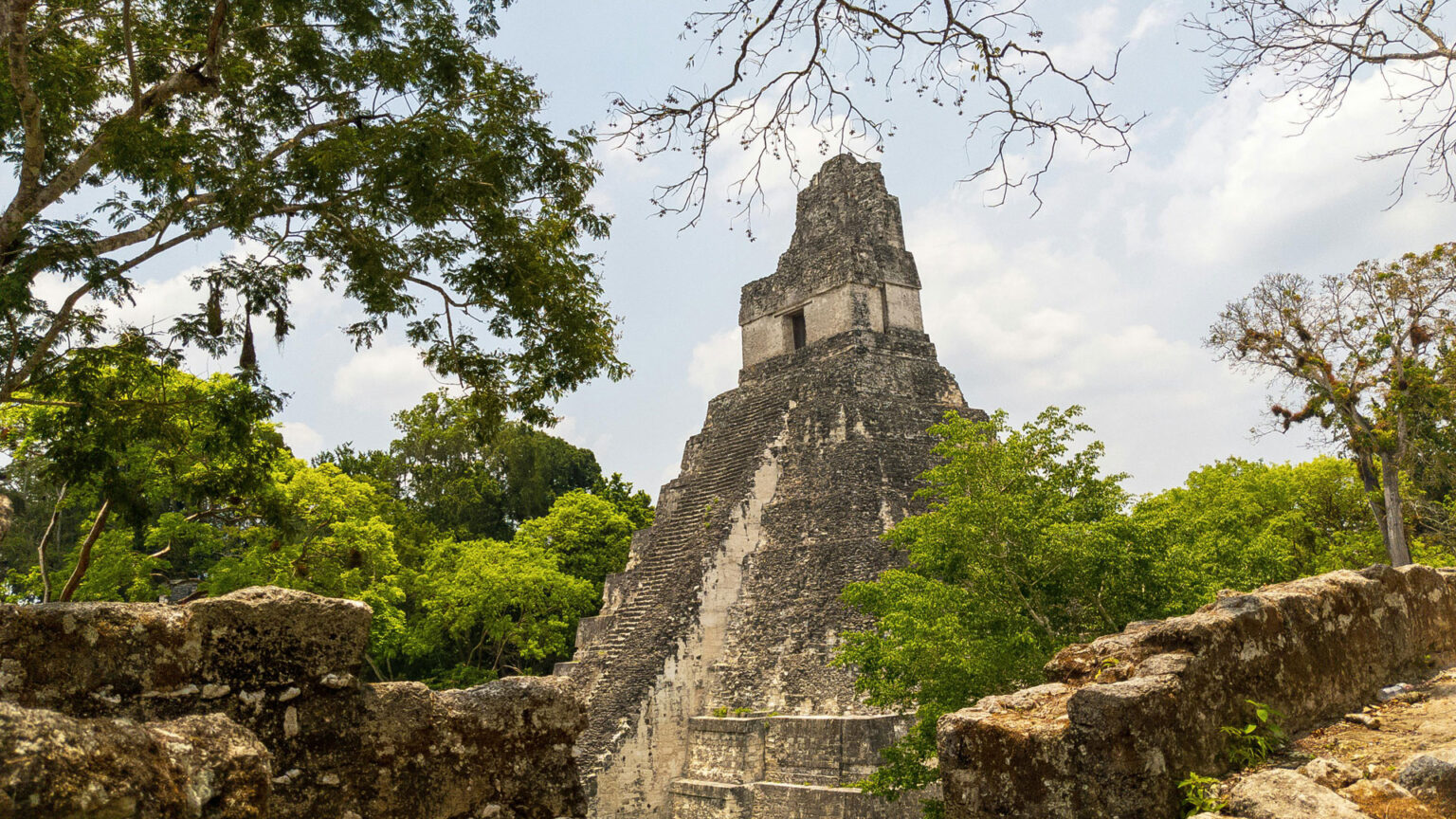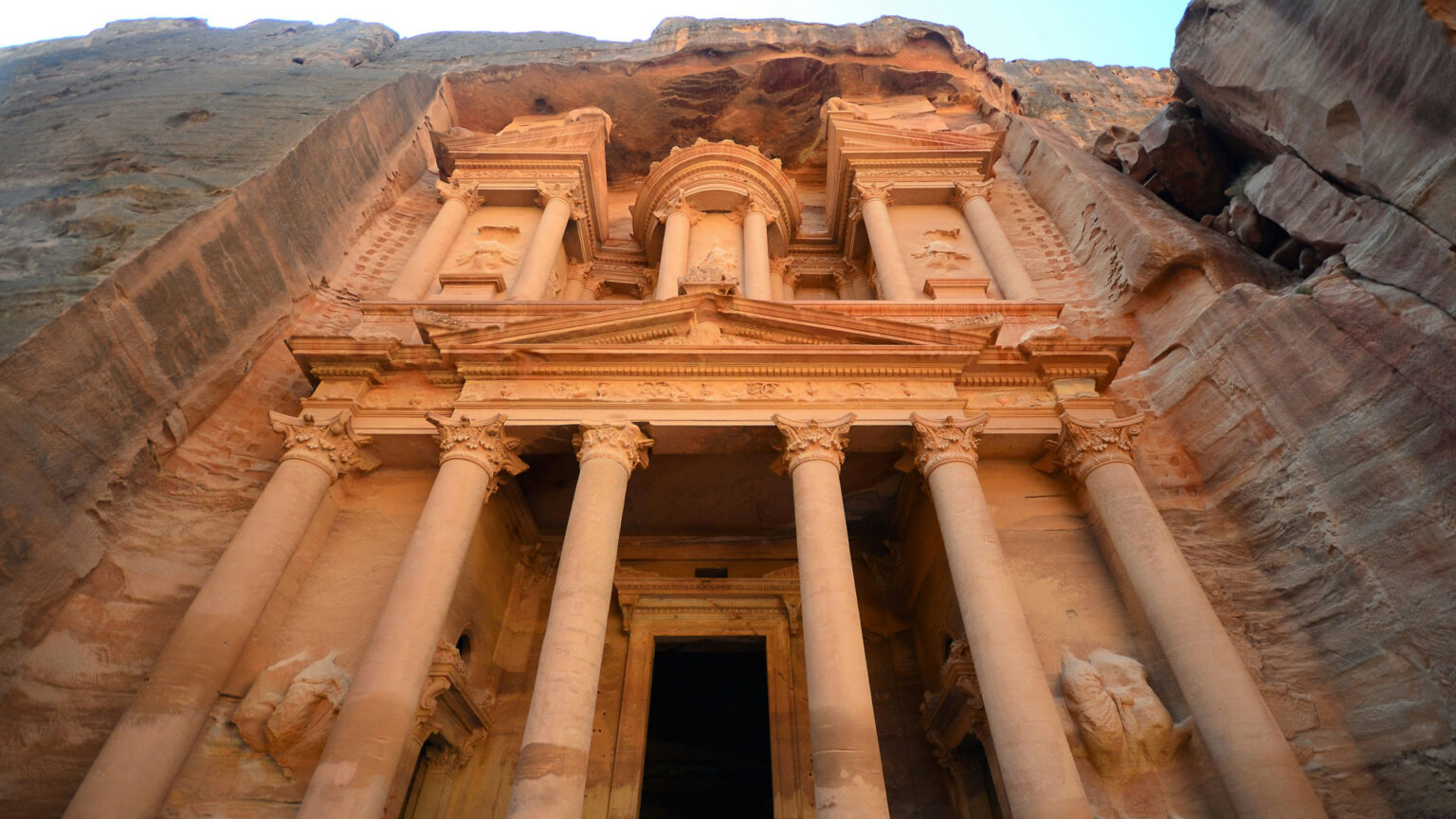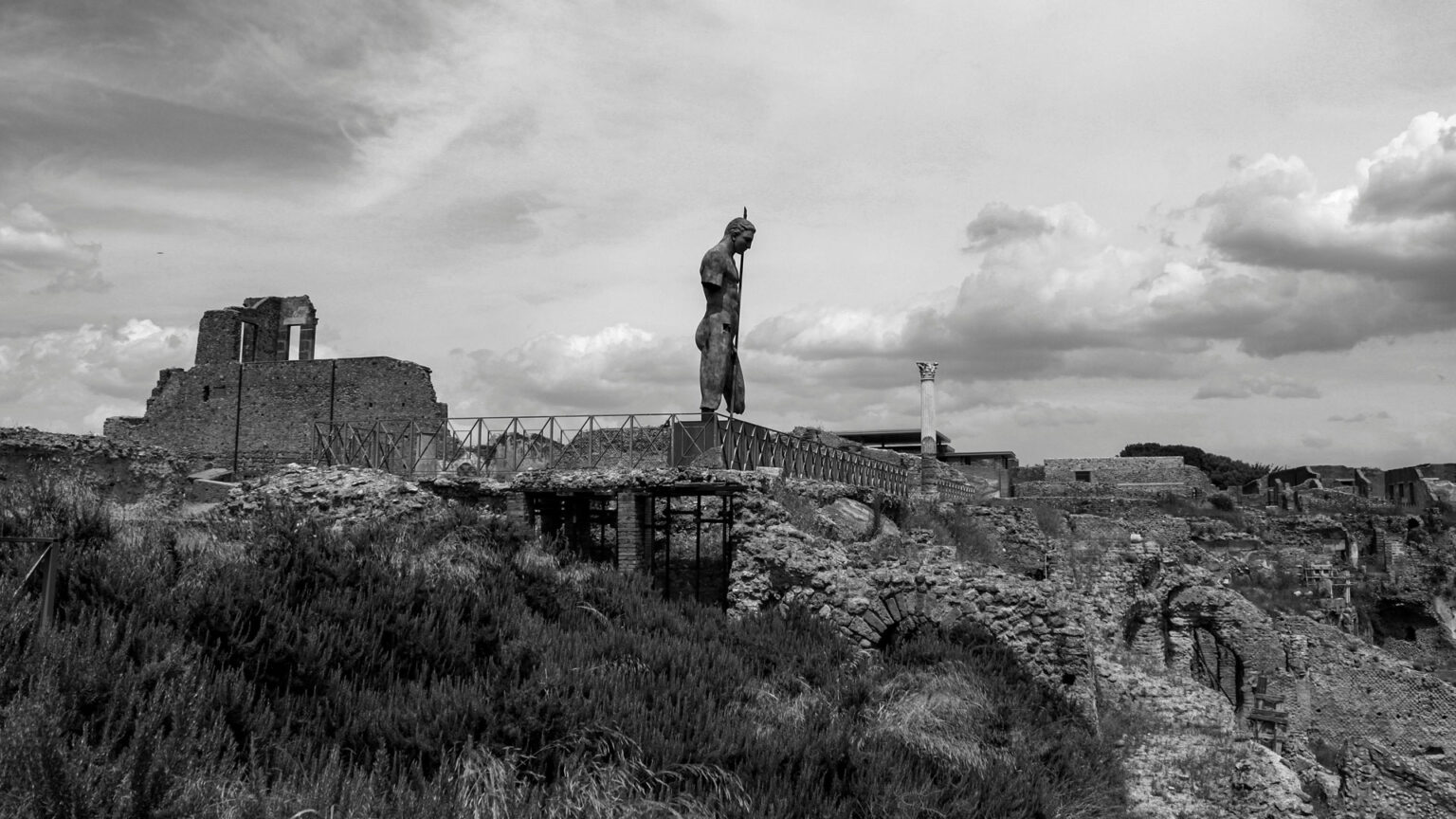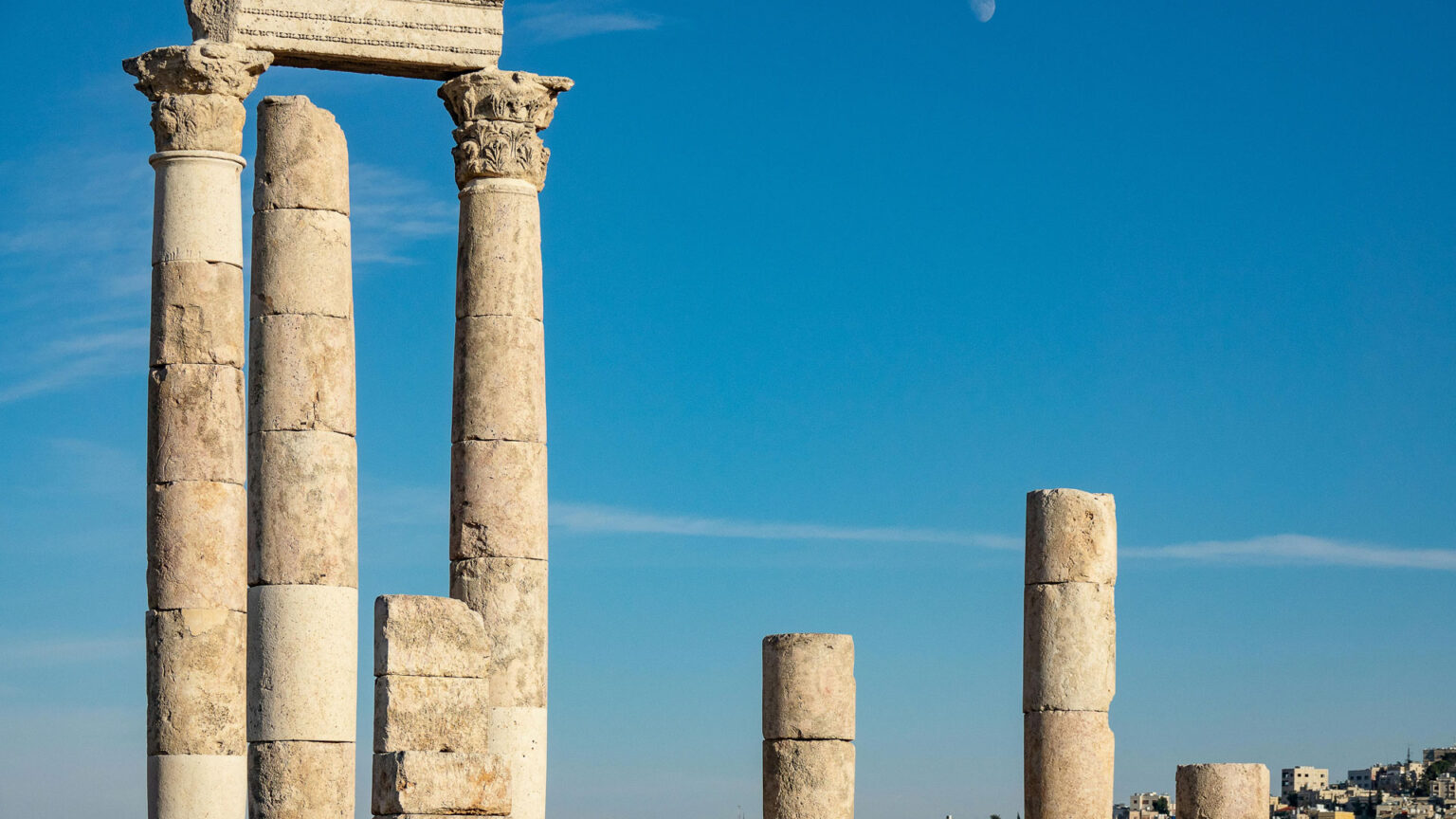Angkor Wat Temple
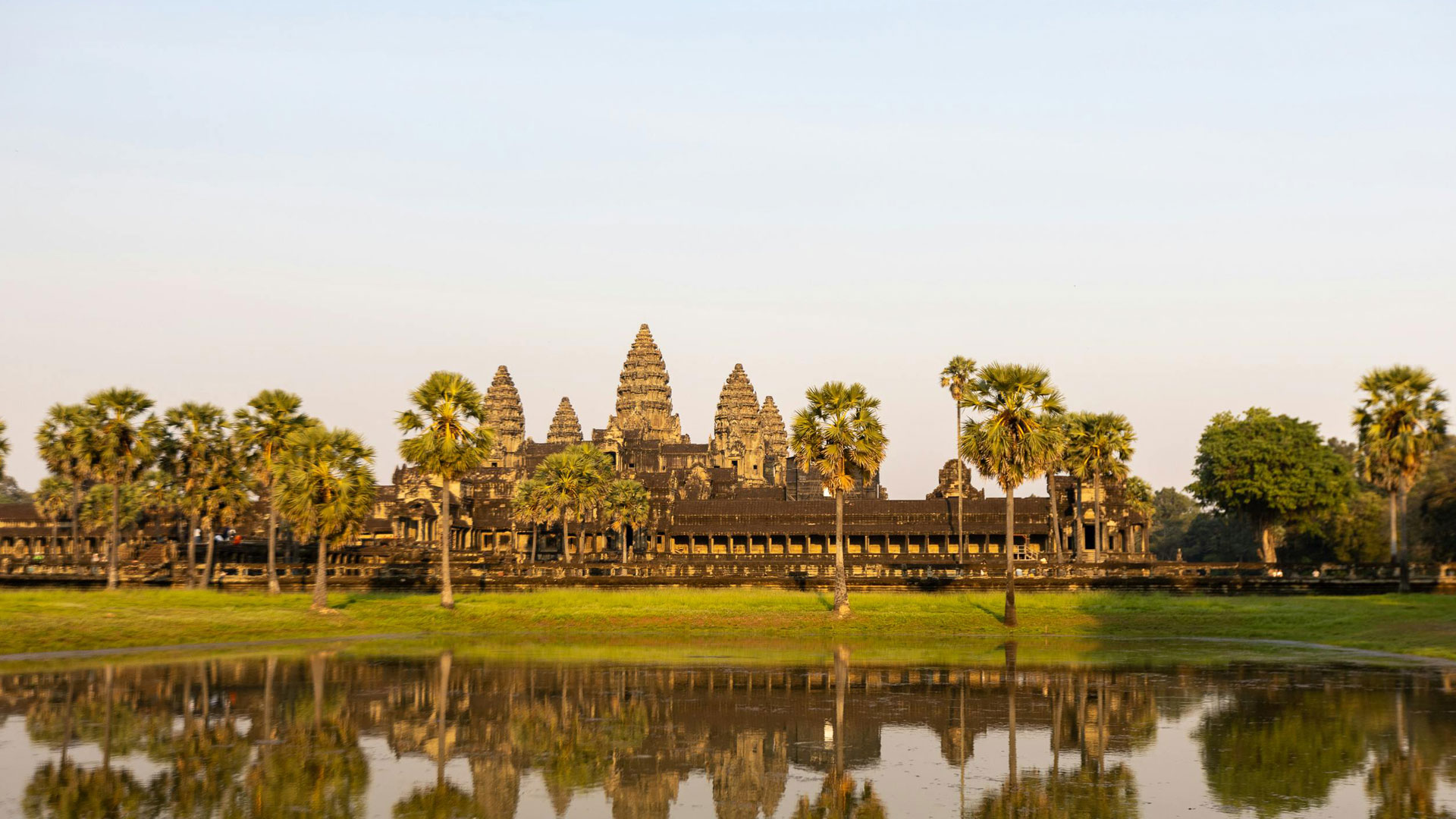
A Cultural and Historical Marvel
The Angkor Wat Temple is a majestic temple complex located in the heart of Cambodia, captivating the imagination of travelers and historians alike. Built in the 12th century, this ancient wonder is a testament to the ingenuity and craftsmanship of the Khmer civilization. The temple’s grandeur and beauty have made it one of the most recognizable landmarks in the world, attracting millions of visitors each year.
Brief Overview of Angkor Wat
The Angkor Wat Temple is the largest temple complex in the world, spanning over 400 acres. Built during the reign of King Suryavarman II, this magnificent structure was originally dedicated to the Hindu god Vishnu. The temple’s design reflects the advanced engineering skills and artistic flair of the Khmer people, who were known for their innovative irrigation systems, sophisticated road networks, and exquisite craftsmanship.
Importance of Angkor Wat as a Cultural and Historical Site
Angkor Wat is more than just a historical site; it’s a cultural treasure, a sacred place of worship, and a window into the past. Its significance extends beyond its historical and cultural importance, as it continues to inspire wonder and awe in all who visit. The temple complex provides valuable insights into the Khmer Empire’s grandeur, politics, and daily life, making it an essential destination for anyone interested in history, culture, and architecture.
Cultural Significance of Angkor Wat
Angkor Wat showcases the advanced artistic and architectural skills of the Khmer people, reflecting their unique cultural identity. The temple’s intricate carvings, bas-reliefs, and sculptures demonstrate the exceptional artistry and craftsmanship of the Khmer civilization. The complex’s design and layout also reflect the Khmer people’s deep understanding of astronomy, mathematics, and engineering.
Historical Significance of Angkor Wat
Angkor Wat provides valuable insights into the Khmer Empire’s grandeur, politics, and daily life. The temple complex was built during the reign of King Suryavarman II, who sought to create a magnificent temple that would surpass all others. The complex’s construction reflects the king’s vision and ambition, as well as the advanced engineering skills and artistic flair of the Khmer people.
Spiritual Significance of Angkor Wat
Angkor Wat remains a revered place of worship, attracting pilgrims and spiritual seekers from around the world. The temple complex exudes a palpable spiritual energy, making it a sacred site for many visitors. The complex’s design and layout also reflect the Khmer people’s deep understanding of spirituality and the universe.
In conclusion, the Angkor Wat Temple is a cultural and historical marvel that continues to inspire wonder and awe in all who visit. Its significance extends beyond its historical and cultural importance, as it provides valuable insights into the Khmer Empire’s grandeur, politics, and daily life. Whether you’re interested in history, culture, architecture, or spirituality, Angkor Wat is a must-visit destination that is sure to leave a lasting impression.
History of Angkor Wat
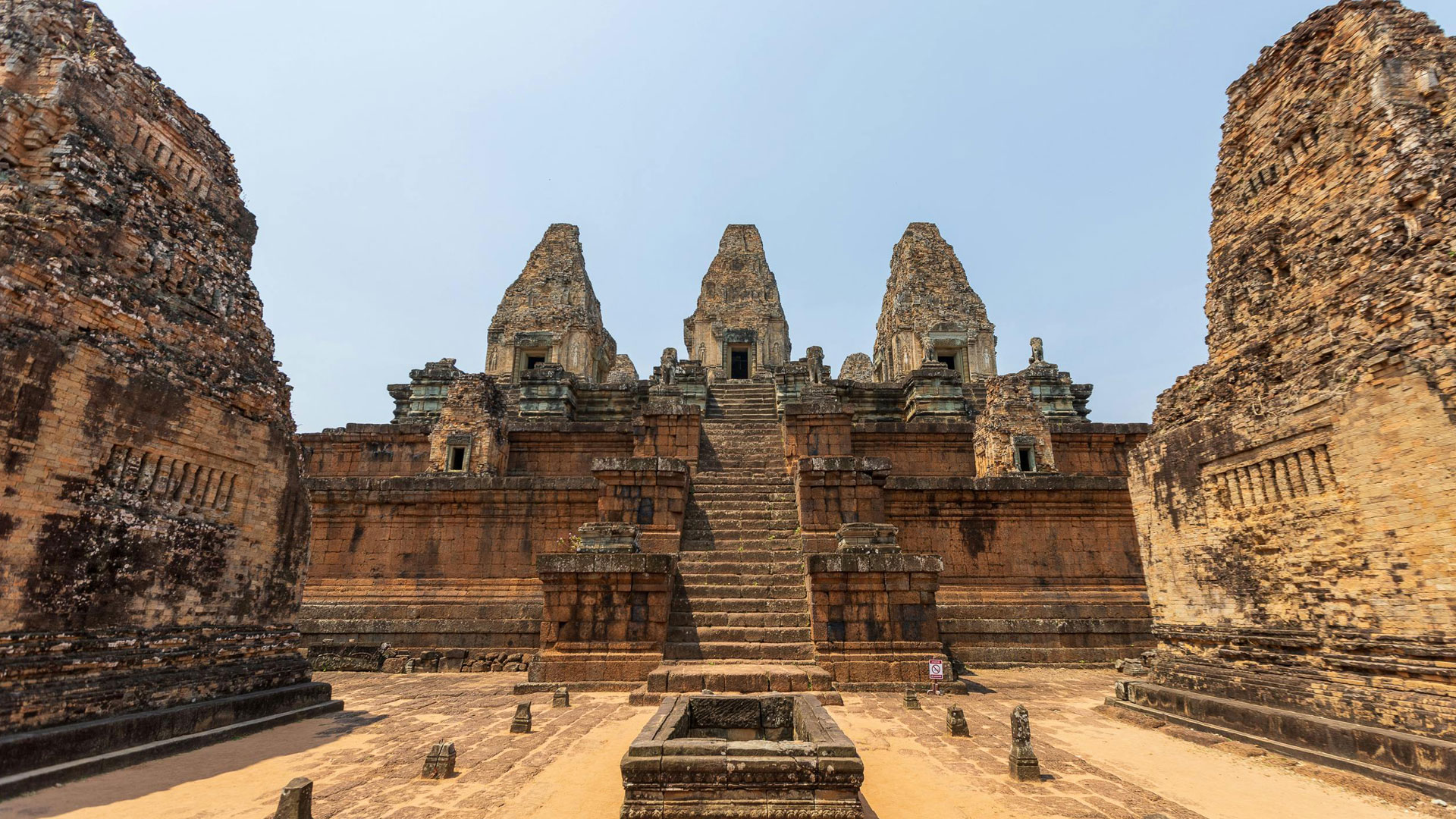
Construction of Angkor Wat (1113-1150 AD)
The construction of Angkor Wat began in 1113 AD and took over 30 years to complete. King Suryavarman II envisioned a magnificent temple complex that would surpass all others, and his vision was brought to life by the skilled architects and laborers of the Khmer Empire. The temple’s construction required the labor of thousands of workers, who toiled in the scorching heat of the Cambodian jungle to build a monument that would last for centuries.
King Suryavarman II and his Vision
King Suryavarman II was a powerful and ambitious ruler who sought to create a temple that would honor the Hindu gods and solidify his legacy. He was a devout Hindu and believed that the construction of a magnificent temple would bring him closer to the gods. The king’s vision was not only to build a temple but also to create a symbol of his power and wealth.
Khmer Empire and its Significance
The Khmer Empire was a powerful and influential civilization that flourished from the 9th to the 15th century. During its peak, the empire covered much of Southeast Asia, including present-day Cambodia, Thailand, Laos, and Vietnam. The Khmer Empire was known for its advanced irrigation systems, sophisticated road networks, and exquisite craftsmanship.
Construction Process
The construction of Angkor Wat required careful planning and execution. The architects and laborers used advanced engineering techniques to build a temple that would last for centuries. The complex’s design and layout reflect the Khmer people’s deep understanding of astronomy, mathematics, and engineering.
Challenges and Obstacles
The construction of Angkor Wat was not without its challenges and obstacles. The laborers had to contend with the scorching heat of the Cambodian jungle, as well as the lack of modern tools and technology. Despite these challenges, the laborers persevered and built a monument that would last for centuries.
Architecture and Symbolism

Design and Layout of Angkor Wat
The Angkor Wat Temple is designed to represent Mount Meru, the mythical home of the Hindu gods. The temple’s design reflects the advanced engineering skills and artistic flair of the Khmer people, who were known for their innovative irrigation systems, sophisticated road networks, and exquisite craftsmanship. The complex’s design and layout also reflect the Khmer people’s deep understanding of astronomy, mathematics, and engineering.
Symbolism of the Towers, Moat, and Bas-Reliefs
The towers of Angkor Wat represent the peaks of Mount Meru, while the moat symbolizes the ocean that surrounds the mountain. The bas-reliefs depict mythological scenes, battles, and everyday life, showcasing the exceptional artistry and craftsmanship of the Khmer people. The symbolism of the towers, moat, and bas-reliefs reflects the Khmer people’s deep understanding of Hindu mythology and their connection to the natural world.
Hindu and Buddhist Influences
Angkor Wat reflects the blending of Hindu and Buddhist influences, showcasing the cultural exchange and syncretism of the Khmer civilization. The temple complex was originally dedicated to the Hindu god Vishnu, but later became a Buddhist temple. The complex’s design and layout reflect the Khmer people’s ability to adapt and evolve their beliefs and practices.
Architecture and Engineering
The architecture and engineering of Angkor Wat are a testament to the ingenuity and craftsmanship of the Khmer people. The complex’s design and layout reflect the advanced engineering skills and artistic flair of the Khmer civilization. The use of sandstone, laterite, and brick in the construction of the temple demonstrates the Khmer people’s ability to work with different materials and create a lasting monument.
Intricate Bas-Reliefs
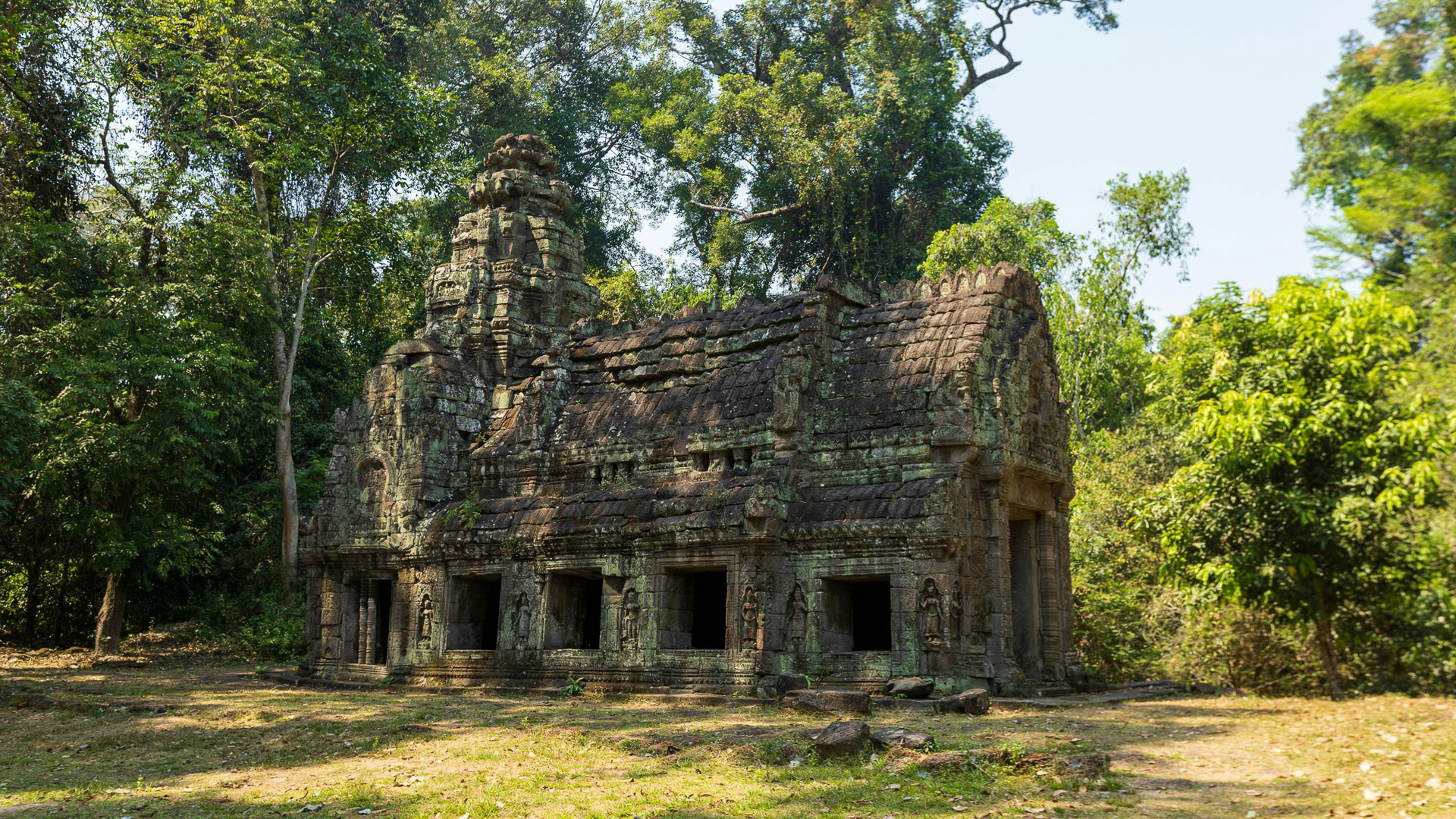
Scenes Depicted on the Bas-Reliefs
The bas-reliefs of Angkor Wat depict a wide range of scenes, including mythological stories, battles, and everyday life. The reliefs showcase the exceptional artistry and craftsmanship of the Khmer people, who were known for their attention to detail and ability to convey complex stories through stone carvings. The scenes depicted on the bas-reliefs provide valuable insights into the Khmer Empire’s culture, religion, and daily life.
Artistry and Craftsmanship
The bas-reliefs of Angkor Wat demonstrate the exceptional artistry and craftsmanship of the Khmer people. The reliefs are carved with intricate details and precision, showcasing the Khmer people’s ability to work with stone and create beautiful works of art. The artistry and craftsmanship of the bas-reliefs are a testament to the Khmer people’s skill and dedication to their craft.
Mythological Stories
The bas-reliefs of Angkor Wat depict a range of mythological stories, including scenes from the Ramayana and the Mahabharata. These stories provide valuable insights into the Khmer Empire’s religious beliefs and cultural practices. The reliefs showcase the Khmer people’s deep understanding of Hindu mythology and their ability to convey complex stories through stone carvings.
Battle Scenes
The bas-reliefs of Angkor Wat also depict battle scenes, showcasing the Khmer Empire’s military prowess and strategic battles. The reliefs provide valuable insights into the Khmer Empire’s military tactics and strategies, as well as its cultural practices and religious beliefs.
Everyday Life
The bas-reliefs of Angkor Wat also depict scenes of everyday life, including market scenes, agricultural activities, and domestic life. These scenes provide valuable insights into the Khmer Empire’s daily life, cultural practices, and religious beliefs.
A Sacred Site
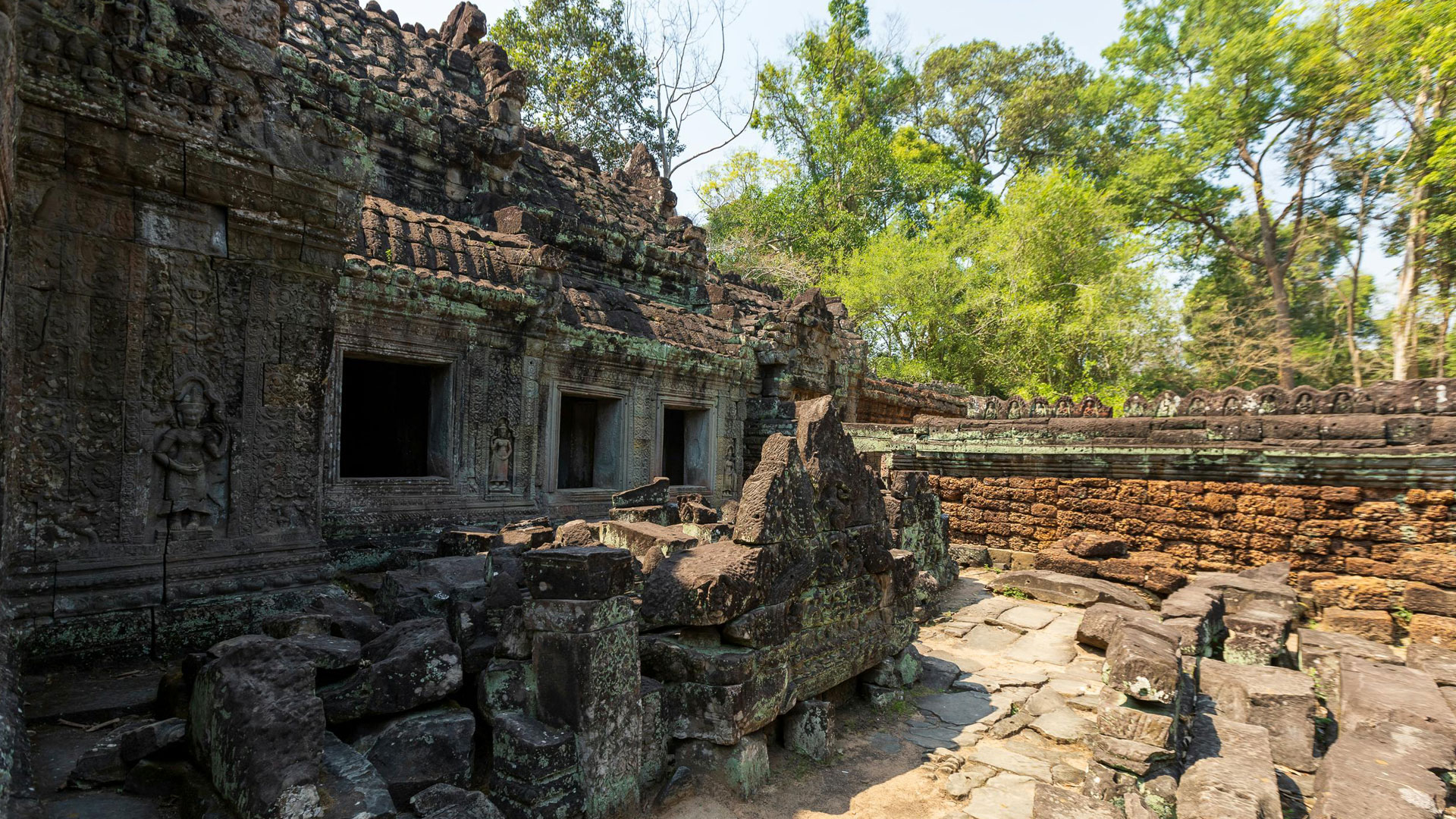
Angkor Wat as a Place of Worship
Angkor Wat remains a revered place of worship, attracting pilgrims and spiritual seekers from around the world. The temple complex exudes a palpable spiritual energy, making it a sacred site for many visitors. The complex’s design and layout reflect the Khmer people’s deep understanding of spirituality and the universe.
Spiritual Significance and Energy
The spiritual significance and energy of Angkor Wat are palpable, attracting visitors from diverse spiritual backgrounds. The temple complex’s design and layout create a sense of harmony and balance, reflecting the Khmer people’s understanding of the interconnectedness of all things.
Modern-Day Visitors and their Experiences
Visitors to Angkor Wat often report profound spiritual experiences, ranging from feelings of peace and tranquility to deep insights and transformations. The temple complex’s sacred energy is said to facilitate personal growth, healing, and spiritual awakening.
Historical Significance as a Place of Worship
Angkor Wat has been a place of worship for centuries, with a rich history of spiritual practices and rituals. The temple complex was originally dedicated to the Hindu god Vishnu, but later became a Buddhist temple. The complex’s spiritual significance has endured across centuries, attracting pilgrims and spiritual seekers from diverse backgrounds.
Cultural Significance as a Place of Worship
Angkor Wat’s cultural significance as a place of worship extends beyond its historical and spiritual importance. The temple complex reflects the Khmer people’s deep understanding of spirituality, culture, and the universe. The complex’s design and layout create a sense of harmony and balance, reflecting the Khmer people’s reverence for nature and the divine.
Preserving the Sacred Site
Efforts are being made to preserve Angkor Wat as a sacred site, protecting its spiritual energy and cultural significance. The Cambodian government, international organizations, and local communities are working together to conserve the temple complex and ensure its continued relevance as a place of worship.
Conservation Efforts
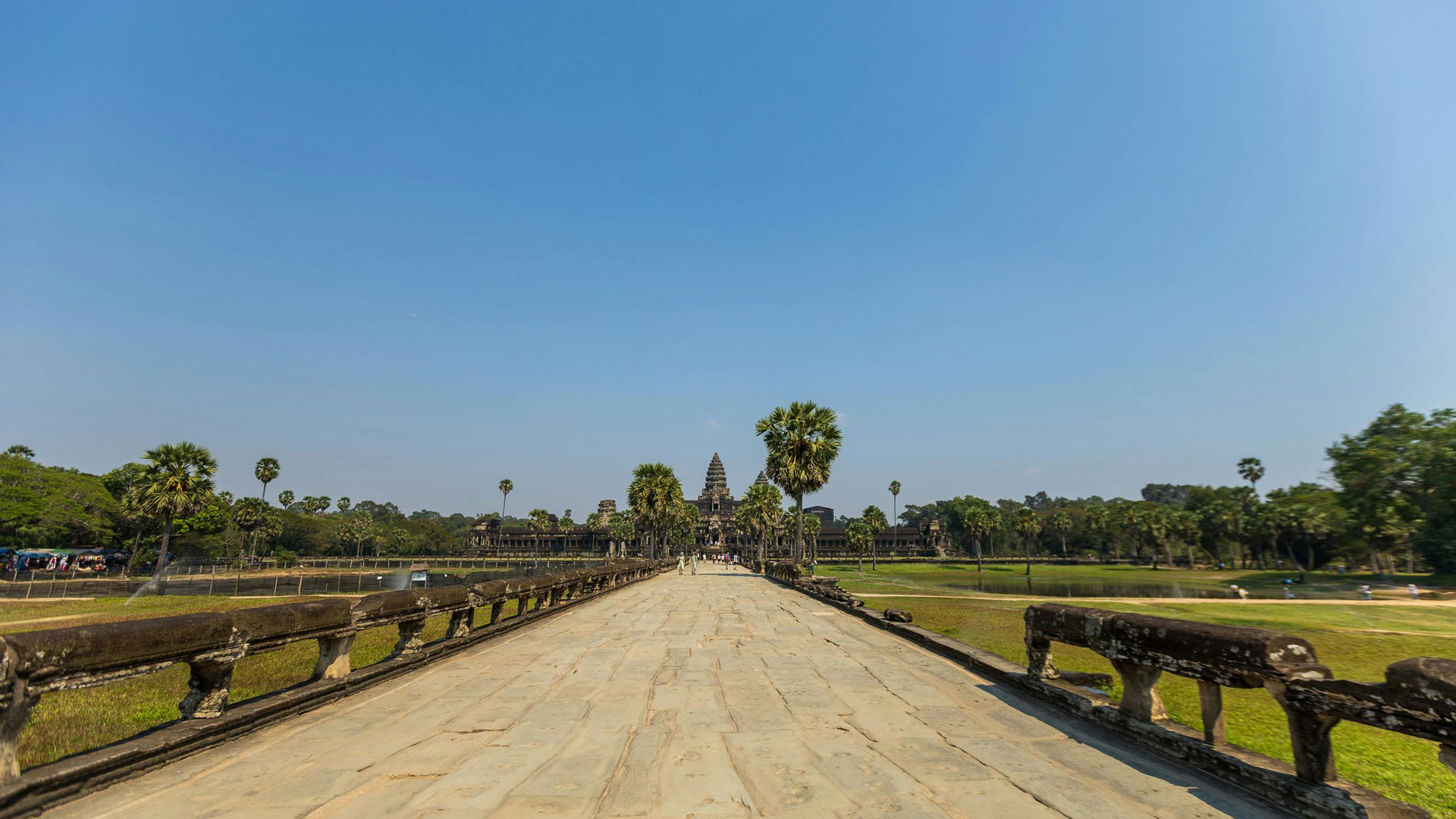
Challenges Facing Angkor Wat
Angkor Wat faces numerous challenges, including the impact of tourism, climate change, and vegetation growth. The temple complex’s fragile infrastructure and delicate carvings are vulnerable to damage from increased visitor numbers and environmental factors.
Conservation Efforts by the Cambodian Government
The Cambodian government has implemented various conservation efforts to protect Angkor Wat and its surroundings. These initiatives include the establishment of the Angkor Archaeological Park, the implementation of sustainable tourism practices, and the collaboration with international organizations to conserve the temple complex.
International Collaboration and Support
International organizations, such as UNESCO and the International Coordinating Committee for the Safeguarding and Development of the Historic Site of Angkor (ICC-Angkor), are working closely with the Cambodian government to conserve Angkor Wat. These organizations provide technical and financial support to protect the temple complex and its surroundings.
Community Involvement and Education
Local communities are playing an essential role in the conservation of Angkor Wat. Education and awareness programs are being implemented to raise awareness about the importance of preserving the temple complex and its surroundings.
Sustainable Tourism Practices
Sustainable tourism practices are being implemented to reduce the impact of tourism on Angkor Wat. These practices include the limitation of visitor numbers, the implementation of environmentally friendly infrastructure, and the promotion of responsible tourism behaviors.
Visiting Angkor Wat
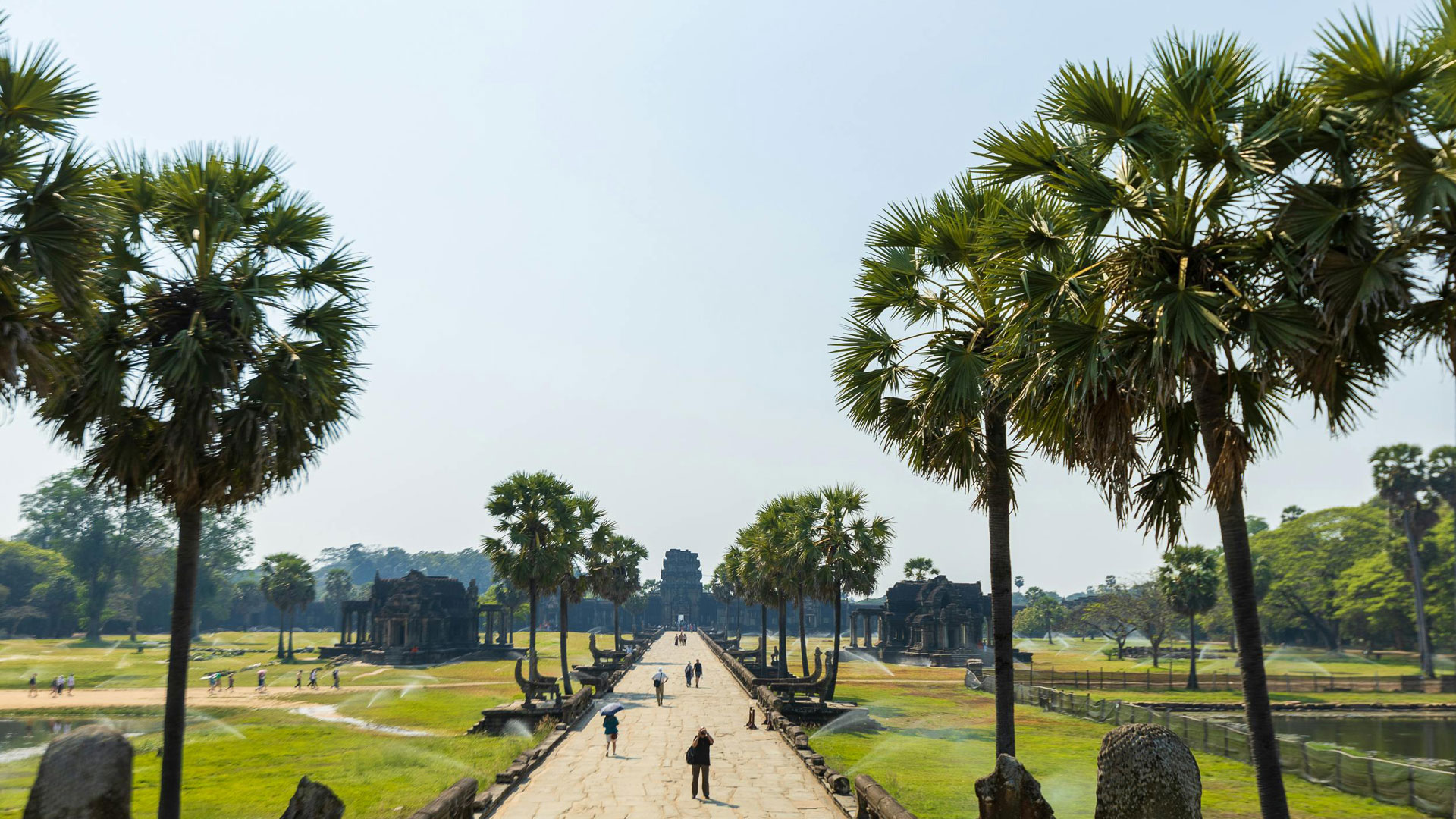
Tips for Visitors
Visiting Angkor Wat requires some planning and preparation. Here are some tips to help you make the most of your visit:
– Hire a knowledgeable guide to provide insight into the temple’s history and significance
– Wear comfortable shoes and clothing suitable for walking and climbing
– Bring sun protection, including a hat, sunglasses, and sunscreen
– Respect local customs and traditions
– Follow rules and regulations to protect the temple and its surroundings
Experiencing the Magic of Angkor Wat
Angkor Wat is a truly magical place, especially during sunrise and sunset. The temple complex takes on a mystical quality, with the soft light casting a golden glow over the intricate carvings and imposing structures.
Exploring the Temple Complex
The Angkor Wat temple complex is vast, covering over 400 acres. Take your time to explore the various temples, bas-reliefs, and sculptures, and be sure to visit the iconic central tower.
Learning about the History and Significance
Angkor Wat has a rich history and significance, spanning over 900 years. Take the time to learn about the temple’s construction, its role in Khmer culture and religion, and its enduring legacy.
Responsible Tourism Practices
When visiting Angkor Wat, it’s essential to practice responsible tourism. This includes respecting local customs and traditions, following rules and regulations, and supporting local communities.
The Ancient City
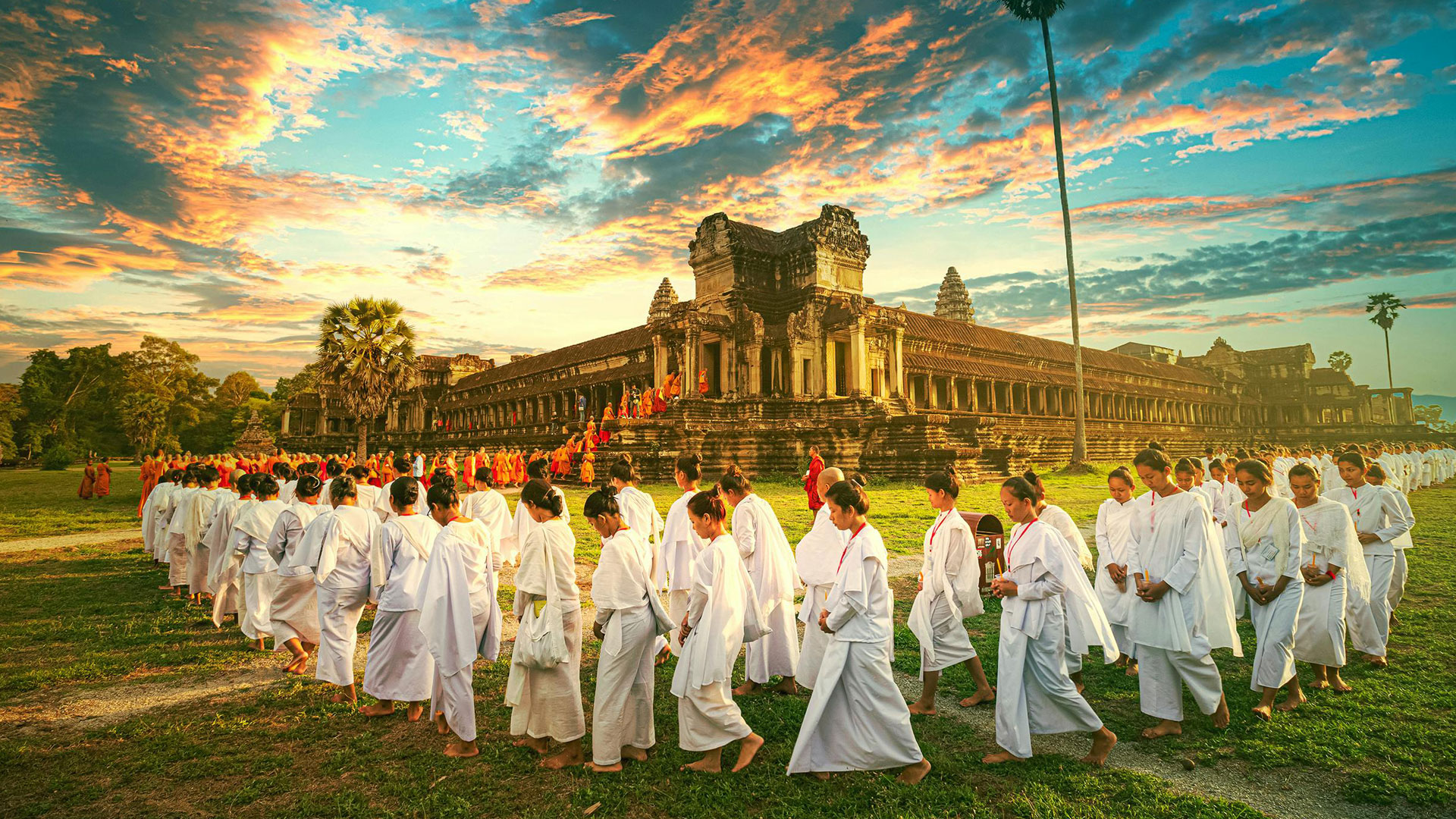
Angkor Archaeological Park and its Significance
The Angkor Archaeological Park is a vast area of approximately 400 square kilometers that encompasses not only Angkor Wat but also several other ancient temples, ruins, and artifacts. The park provides a unique glimpse into the Khmer Empire’s grandeur, politics, and daily life, showcasing the advanced engineering skills, artistic flair, and cultural achievements of the Khmer civilization.
History of the Park
The Angkor Archaeological Park was established in 1992 to protect and conserve the ancient temples and ruins. The park has undergone significant restoration and conservation efforts, including the removal of landmines, the restoration of ancient structures, and the development of sustainable tourism practices.
Other Temples and Ruins in the Park
In addition to Angkor Wat, the park features several other notable temples and ruins, including:
- Angkor Thom: A vast temple complex that served as the capital of the Khmer Empire, featuring intricate carvings and imposing structures.
- Bayon: A temple famous for its intricate carvings and mysterious smile, showcasing the advanced artistic skills of the Khmer people.
- Ta Prohm: A temple left in a state of ruin, overgrown with jungle vegetation, providing a glimpse into the park’s natural beauty.
- Preah Khan: A temple complex featuring intricate carvings and sculptures, showcasing the Khmer people’s advanced engineering skills.
- Neak Pean: A small island temple surrounded by a moat, providing a serene and peaceful atmosphere.
Exploring the Ancient City
Visitors can explore the ancient city by:
- Guided tours: Learn about the history and significance of the temples and ruins from knowledgeable guides.
- Self-guided exploration: Wander through the park and discover hidden gems.
- Bike tours: Explore the park on two wheels and enjoy the scenic views.
- Horse-drawn carriage tours: Experience the park’s beauty in a leisurely and relaxing manner.
Preserving the Ancient City
Efforts are being made to preserve the ancient city and its surroundings, including:
- Protecting the temples and ruins from damage and looting.
- Restoring and conserving the ancient structures.
- Promoting sustainable tourism practices.
- Collaborating with international organizations and local communities.
Challenges Facing the Park
Despite conservation efforts, the park faces several challenges, including:
- Climate change and rising temperatures.
- Increased tourism and its impact on the environment.
- Limited resources and funding.
Conclusion
Recap of Angkor Wat’s Importance and Mystery
Angkor Wat is a majestic temple complex that has captivated the imagination of travelers and historians alike. Its grandeur, beauty, and historical significance make it one of the most recognizable landmarks in the world.
Key Takeaways
- Angkor Wat is the largest temple complex in the world, spanning over 400 acres.
- The temple complex was built in the 12th century during the reign of King Suryavarman II.
- Angkor Wat represents the pinnacle of Khmer architecture and artistry.
- The temple complex is a testament to the advanced engineering skills and cultural achievements of the Khmer civilization.
Unanswered Questions and Future Research Directions
Despite extensive research and study, many questions about Angkor Wat remain unanswered, including:
- The exact construction methods used to build the temple complex.
- The meaning behind the intricate carvings and bas-reliefs.
- The role of Angkor Wat in Khmer society and culture.
Preserving Angkor Wat for Future Generations
Efforts are being made to preserve Angkor Wat and its surroundings, including:
- Conservation efforts by the Cambodian government and international organizations.
- Sustainable tourism practices.
- Education and awareness programs.
Conclusion
Angkor Wat is a cultural and historical treasure that continues to inspire wonder and awe. Its grandeur, beauty, and historical significance make it a must-visit destination for anyone interested in history, culture, and architecture.
Final Thoughts
- Angkor Wat is a testament to human ingenuity and creativity.
- The temple complex represents the pinnacle of Khmer architecture and artistry.
- Angkor Wat continues to inspire wonder and awe.

